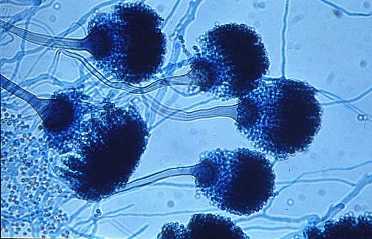Mold Illness, more accurately known as Chronic Inflammatory Response Syndrome (CIRS), is a complex, multi-system illness caused by an ongoing, inappropriate immune response to environmental toxins, particularly biotoxins. While mold and its associated mycotoxins are common triggers, CIRS can also be initiated by other biological toxins, such as those from Lyme disease, certain tick-borne illnesses, cyanobacteria (from harmful algal blooms), dinoflagellates (from red tide events), and even certain spider bites.
How CIRS Works:
In a healthy individual, the immune system recognizes and eliminates toxins from the body. However, for about 25% of the population, a genetic predisposition (specifically related to HLA-DR/DQ genes) prevents their immune system from effectively clearing these biotoxins. Instead, these toxins remain in the body, triggering a continuous and uncontrolled inflammatory cascade. This sustained inflammation affects nearly every system in the body, leading to a wide range of debilitating symptoms.
Conditions and Symptoms Associated with CIRS:
Because CIRS affects multiple systems, its symptoms are diverse and often overlap with other chronic conditions, making diagnosis challenging. Patients may go years without a proper diagnosis. The symptoms often appear in “clusters” and can vary in intensity.
Here’s a comprehensive list of conditions and symptoms commonly associated with CIRS:
General/Constitutional:
- Profound fatigue and weakness (often mistaken for Chronic Fatigue Syndrome)
- Flu-like symptoms
- Weight gain or loss
- Frequent static shocks
- Temperature dysregulation (cold hands/feet, excessive sweating, night sweats)
- Excessive thirst and frequent urination
- Difficulty regulating body temperature
- Painful nerve sensations (“ice pick” or “lightening bolt” pain)
Neurological/Cognitive:
- Brain fog
- Memory problems (difficulty with recall, impaired short-term and long-term memory)
- Difficulty concentrating and focusing
- Word-finding difficulties
- Disorientation and confusion
- Headaches and migraines
- Vertigo and dizziness
- Numbness and tingling (paresthesias)
- Muscle cramps and spasms
- Tremors
- Dysautonomia (problems with autonomic nervous system, e.g., POTS – Postural Orthostatic Tachycardia Syndrome)
- Unusual skin sensations (crawling, stinging)
- Mood swings, anxiety, depression, irritability
- Insomnia and sleep disturbances
- Seizure-like events (atypical)
Musculoskeletal:
- Unexplained muscle pain and cramping
- Joint pain and stiffness (especially morning stiffness)
- Fibromyalgia-like symptoms
- Atypical rheumatological conditions
Respiratory/Sinus:
- Sinus congestion and chronic sinusitis
- Shortness of breath and “air hunger”
- Cough and wheezing
- Asthma-like symptoms
- Post-nasal drip and sore throat
- Nasal polyps
Gastrointestinal:
- Abdominal pain and bloating
- Diarrhea or constipation
- Nausea and vomiting
- Appetite swings
- Metallic taste in mouth
- Leaky gut syndrome
- Irritable Bowel Syndrome (IBS)
Eyes/Ears/Skin:
- Blurred vision and light sensitivity
- Red eyes and tearing
- Tinnitus (ringing in the ears)
- Hearing loss
- Unusual rashes, itchy skin (pruritus)
- Skin sensitivity to light touch or sun
- Vitiligo
- Easy bruising
- Puffy/dark circles around the eyes
Hormonal/Endocrine:
- Hormonal dysregulation (e.g., low androgens, issues with ACTH/cortisol, ADH/Osmolality, MSH, VEGF, Leptin)
- Poor temperature regulation
Immune System:
- Multiple chemical sensitivity (MCS)
- Frequent infections
- Atypical autoimmune conditions
Diagnosis of CIRS typically involves a multi-faceted approach:
- Exposure History: Thoroughly documenting potential exposure to water-damaged buildings, tick bites, or other biotoxin sources.
- Symptom Cluster Analysis: Identifying if the patient presents with a sufficient number of symptoms across various body systems. Dr. Ritchie Shoemaker’s protocol often uses a cluster analysis to assess the likelihood of CIRS.
- Visual Contrast Sensitivity (VCS) Testing: A quick and inexpensive screening tool that assesses neurological function; a common indicator of CIRS.
- Specific Biomarkers (Blood Tests): Measuring levels of inflammatory markers, hormones, and other compounds that are often dysregulated in CIRS. These can include:
- HLA-DR/DQ Genetic Testing: To determine genetic susceptibility.
- C4a: A component of the complement system, often elevated in CIRS.
- TGF-beta1: A cytokine involved in inflammation and tissue repair, often elevated.
- MSH (Melanocyte Stimulating Hormone): Often low in CIRS, impacting various body functions.
- VIP (Vasoactive Intestinal Polypeptide): Often low, affecting fluid balance and other systems.
- MMP-9 (Matrix Metalloproteinase-9): An enzyme involved in inflammation and tissue breakdown, often elevated.
- ADH/Osmolality: To check for imbalances in fluid regulation.
- ACTH/Cortisol: To assess adrenal function.
- VEGF (Vascular Endothelial Growth Factor): Can be low, impacting blood vessel health.
- Mycotoxin Testing (Urine): To identify specific mycotoxins in the body, confirming mold exposure.
- MARCoNS Testing (Nasal Swab): To check for Multiple Antibiotic Resistant Coagulase Negative Staphylococcus, a common bacterial infection in the nasal passages of CIRS patients that produces harmful exotoxins.
- Environmental Testing: Assessing the living or working environment for mold contamination using methods like ERMI (Environmental Relative Moldiness Index) or HERTSMI-2.
Treatment of CIRS is typically a structured, multi-step protocol, often guided by the “Shoemaker Protocol,” and requires a practitioner with expertise in CIRS. The core principles include:
- Removal from Exposure: The most critical first step. This may involve professional mold remediation of the affected building or avoiding the source of other biotoxins.
- Removal of Biotoxins from the Body: Using binders (e.g., Cholestyramine or Welchol) to interrupt the enterohepatic recirculation of toxins and help excrete them.
- Eradicating MARCoNS: If present, treating the nasal bacterial infection with specialized nasal sprays.
- Correcting Inflammatory Pathways: Addressing the ongoing inflammation through various means, including diet, supplements, and sometimes specific medications.
- Addressing Hormone Imbalances: Correcting dysregulations in hormones like MSH, ADH, ACTH, and sex hormones.
- Restoring Gut Health: Repairing intestinal permeability and balancing the gut microbiome.
- Supporting Detoxification: Enhancing the body’s natural detoxification pathways.
- Repairing Neural Function: Addressing brain inflammation and cognitive issues.
CIRS is a complex and often debilitating condition, but with proper diagnosis and a comprehensive treatment approach, patients can see significant improvement and recovery.
